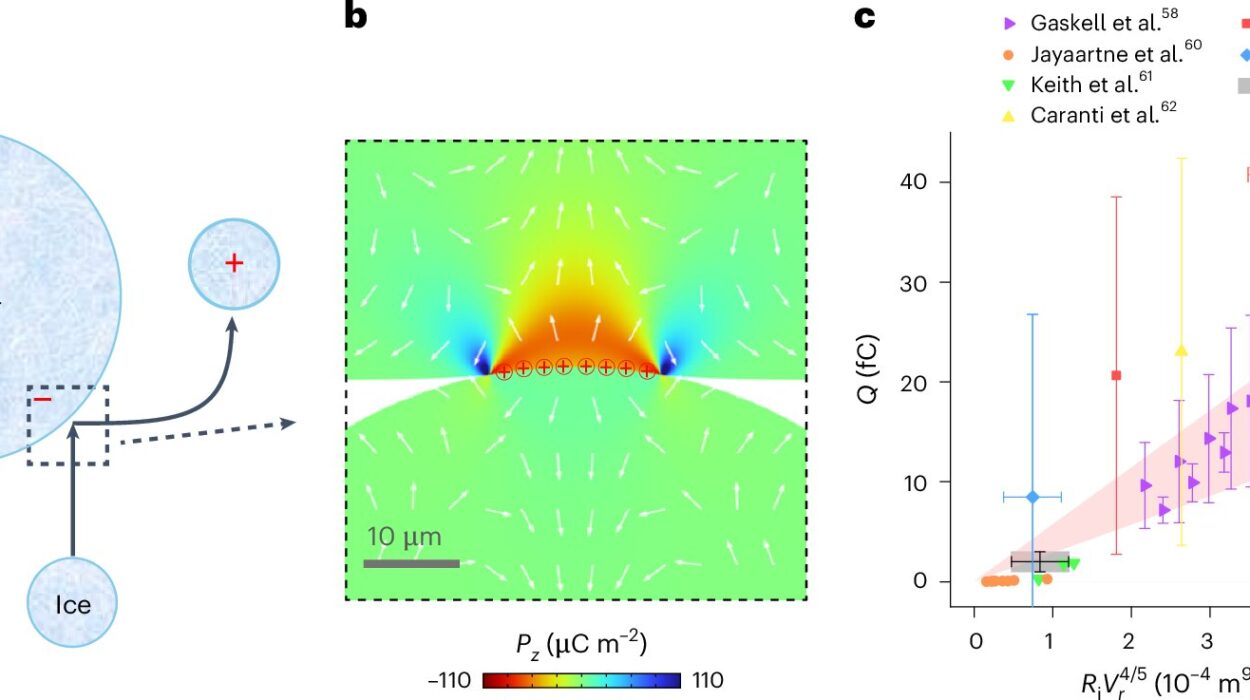Imagine trying to hear a conversation in a silent room—where the voices cancel each other out perfectly. That’s the challenge scientists face with antiferromagnetic materials, whose internal magnetic spins precisely neutralize one another, hiding all evidence of their energetic dance from the outside world.
But what if you could listen in anyway? What if you could not only detect those silent motions but harness them to build electronics a thousand times faster than anything we know today?
In a groundbreaking leap, researchers have just opened that door. In a paper published in Science, physicists describe how they’ve managed to both detect and control the elusive inner motions of antiferromagnets—using clever quantum tricks and materials barely thicker than an atom.
“We’ve shrunk this technology from millimeter-sized samples to micrometer-sized devices, nearly a thousand times smaller,” says Dan Ralph, F.R. Newman Professor of Physics at Cornell and co-corresponding author on the study. “And for the first time, we can read out these extremely fast oscillations electrically.”
It’s a feat that could bring us closer to building the holy grail of spintronics: ultra-fast, energy-efficient electronics capable of operating at terahertz speeds, far beyond today’s gigahertz technologies.
Antiferromagnets: Masters of Hidden Motion
Magnetic materials are central to the modern world. They store the bits on your hard drive, run magnetic memory chips, and anchor technologies as mundane as refrigerator magnets. In those materials—ferromagnets—atomic “spins” all point the same way, collectively producing a strong magnetic field.
Antiferromagnets, however, are the stealth ninjas of the magnetic realm. In them, atomic spins point in perfectly opposite directions, cancelling out so neatly that the whole material seems magnetically invisible. No magnetic field reaches outside to betray what’s happening within.
Yet antiferromagnets have incredible potential. Because of how tightly coupled their spins are, they can vibrate and flip back and forth at frequencies thousands of times higher than ferromagnets can manage. That makes them tantalizing candidates for high-frequency communication devices, ultra-fast computing, and even quantum technologies.
But there’s a problem: how do you detect—and control—something that leaves no magnetic trace?
Tunneling Into the Quantum World
The breakthrough came through a quantum phenomenon known as tunneling.
“Electrons can do funny things,” Ralph explains. “They can tunnel through barriers that would be impossible in the classical world.”
In a tunnel junction, an extremely thin insulating layer sits between two conductive materials. Electrons don’t “travel through” it the way cars drive through a tunnel. Instead, their quantum wavefunctions leak across the gap, letting some electrons appear on the other side as though the barrier wasn’t there.
The team realized that when spins inside an antiferromagnet change direction, they subtly alter how easily electrons can tunnel through this barrier. That changes the electrical resistance of the junction, essentially turning invisible spin motion into a measurable electrical signal.
“This is one of our breakthroughs,” says Kelly Luo, co-corresponding author and now an assistant professor at the University of Southern California. “We’re using this quantum tunneling to read out spin oscillations that happen at extremely high speeds.”
Twisting Layers to Break the Silence
Still, detection alone isn’t enough. Scientists also want to control the spins inside antiferromagnets—to switch them on demand, steer them like tiny compass needles, and harness their ultrafast rhythms for new technologies.
To achieve that, the researchers turned to a phenomenon called spin-orbit torque. By passing a charge current through certain materials, you generate a “spin current”—an invisible river of angular momentum that can push on the magnetic spins in a material and make them rotate.
But antiferromagnets are notoriously symmetrical: every spin is perfectly balanced by an opposite one. How do you push one spin layer without pushing its mirror image?
The team cracked the problem by physically twisting the layers in their 2D antiferromagnetic material, breaking the symmetry.
“With this geometry, we can use applied currents with spin-orbit torque to apply a force to just one of the spin layers and not the other,” explains lead author Thow Min Jerald Cham, now a postdoctoral scholar at Caltech. “It’s a first step for controlling spin dynamics in a very precise way.”
The Road to Ultrafast Technology
This marriage of 2D materials and spintronics is opening new frontiers. The devices operate at terahertz frequencies—trillions of cycles per second—offering the potential for data transfer speeds far beyond what silicon electronics can achieve.
“Our studies show that antiferromagnetic materials have great potential for realizing nano-oscillators for high-frequency applications,” the researchers wrote.
Such oscillators could one day become the beating heart of ultrafast processors, advanced sensors, or secure communication systems immune to magnetic hacking.
It’s still early days, but the ability to probe and manipulate antiferromagnets at microscopic scales represents a monumental step.
Other collaborators on the work include Xiaoxi Huang, postdoctoral associate in Ralph’s lab; Daniel G. Chica and Xavier Roy at Columbia University; and Kenji Watanabe and Takashi Taniguchi of Japan’s National Institute for Materials Science.
A Silent Revolution
For decades, ferromagnets have ruled our magnetic technologies. But in the quiet, hidden world of antiferromagnets, a revolution has been brewing—a silent oscillation waiting to be heard.
Thanks to tunneling electrons and quantum ingenuity, scientists are finally listening in. And in that whisper of spins, the future of ultra-fast electronics may be taking shape.
Reference: Thow Min Jerald Cham et al, Spin-filter tunneling detection of antiferromagnetic resonance with electrically tunable damping, Science (2025). DOI: 10.1126/science.adq8590






